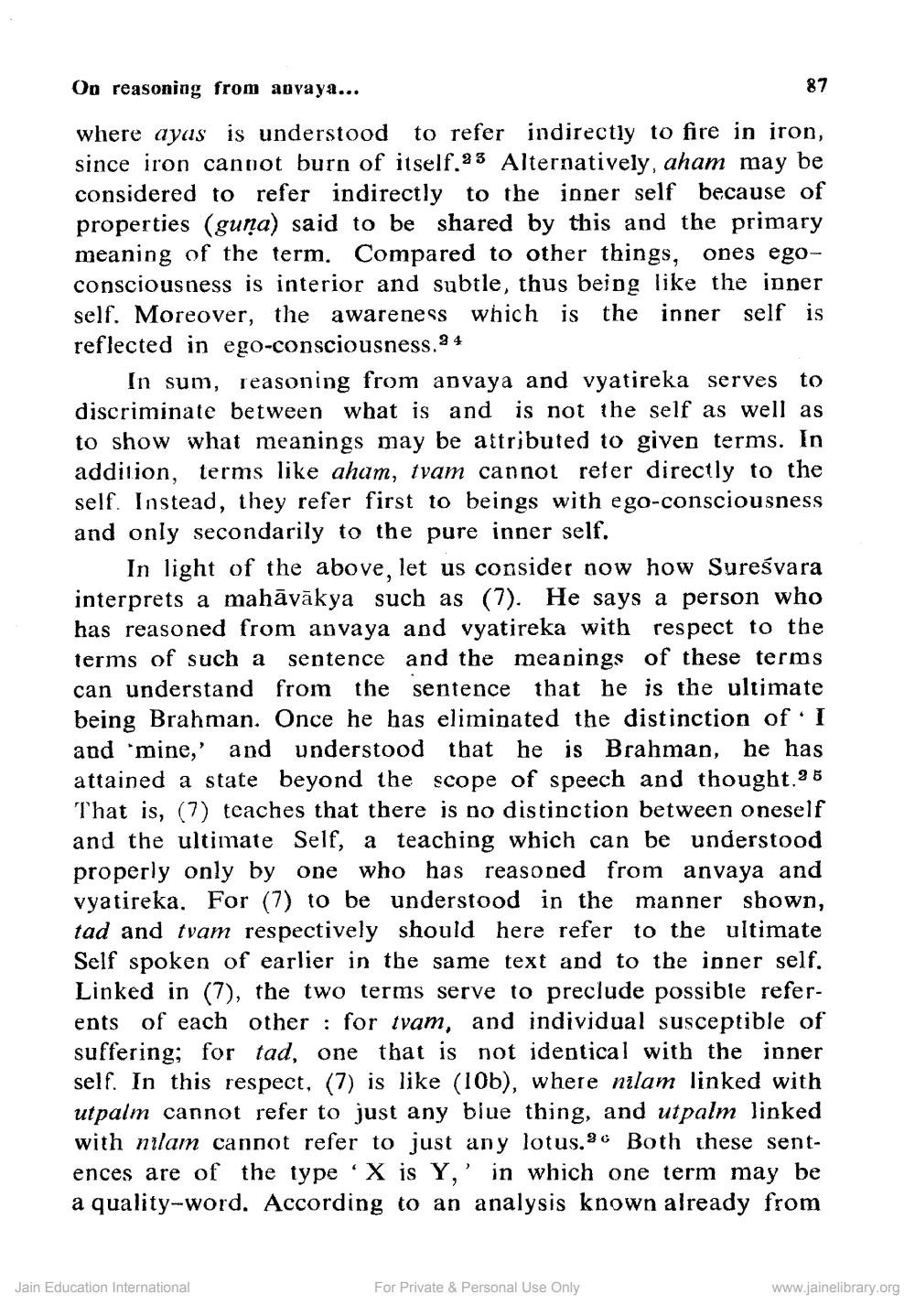________________
On reasoning from apvaya...
87 where ayas is understood to refer indirectly to fire in iron, since iron cannot burn of itself.23 Alternatively, aham may be considered to refer indirectly to the inner self because of properties (guna) said to be shared by this and the primary meaning of the term. Compared to other things, ones egoconsciousness is interior and subtle, thus being like the inner self. Moreover, the awareness which is the inner self is reflected in ego-consciousness. 24
In sum, reasoning from anvaya and vyatireka serves to discriminate between what is and is not the self as well as to show what meanings may be attributed to given terms. In addition, terms like aham, tvam cannot reter directly to the self. Instead, they refer first to beings with ego-consciousness and only secondarily to the pure inner self.
In light of the above, let us consider now how Sureśvara interprets a mahāvākya such as (7). He says a person who has reasoned from anvaya and vyatireka with respect to the terms of such a sentence and the meanings of these terms can understand from the sentence that he is the ultimate being Brahman. Once he has eliminated the distinction of. I and mine,' and understood that he is Brahman, he has attained a state beyond the scope of speech and thought.25 That is, (7) teaches that there is no distinction between oneself and the ultimate Self, a teaching which can be understood properly only by one who has reasoned from anvaya and vyatireka. For (7) to be understood in the manner shown, tad and tvam respectively should here refer to the ultimate Self spoken of earlier in the same text and to the inner self. Linked in (7), the two terms serve to preclude possible referents of each other : for tvam, and individual susceptible of suffering; for tad, one that is not identical with the inner self. In this respect, (7) is like (10b), where nilam linked with utpalm cannot refer to just any blue thing, and utpalm linked with nilam cannot refer to just any lotus.Both these sentences are of the type ‘X is Y,' in which one term may be a quality-word. According to an analysis known already from
Jain Education International
For Private & Personal Use Only
www.jainelibrary.org




